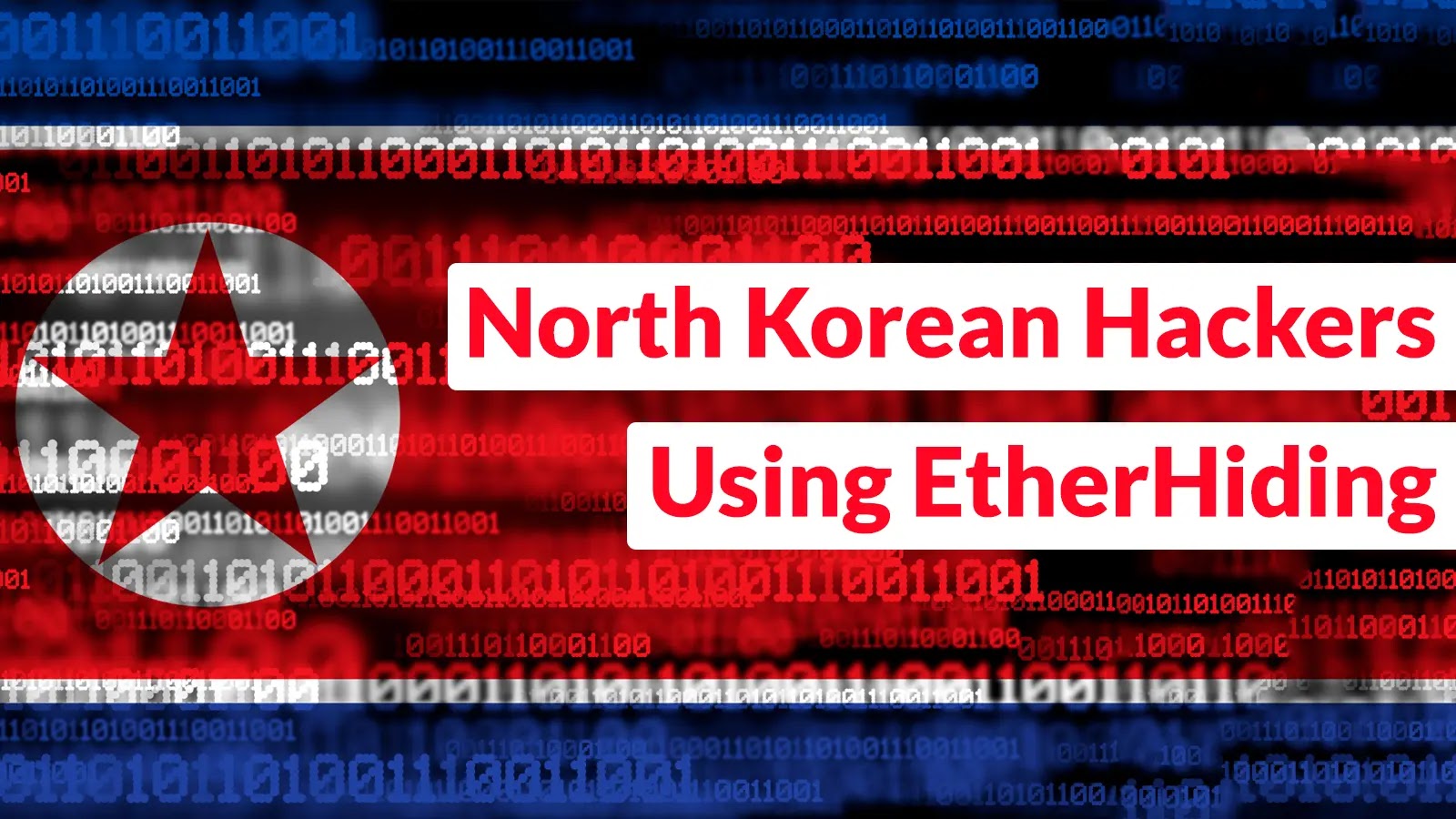
North Korean Hackers Using EtherHiding to Deliver Malware and Steal Cryptocurrency
The digital landscape of cryptocurrency is a battleground, and a new, insidious threat has emerged from the shadows. North Korean-aligned threat actors are leveraging a sophisticated malware campaign, dubbed EtherHiding, to target cryptocurrency exchanges and their users. This isn’t just another phishing scam; it’s a meticulously crafted operation designed to exploit digital supply chain vulnerabilities and siphon off valuable crypto assets.
In a period marked by intensified regulatory scrutiny on illicit crypto transactions, these attackers have recalibrated their strategies, presenting a significant escalation in cybersecurity risks. Understanding EtherHiding is paramount for anyone involved in the cryptocurrency space, from exchanges to individual investors.
Understanding EtherHiding: A New Vector for Cryptocurrency Theft
EtherHiding represents a concerning evolution in cyber warfare. While specific technical details on its inner workings are still emerging, the core premise involves a sophisticated method of malware delivery and obfuscation. The “Ether” in EtherHiding likely alludes to Ethereum, a prominent blockchain platform, suggesting a targeted approach to its ecosystem or perhaps broader cryptocurrency fraud.
The campaign’s emergence coincides with a global push to tighten regulations around cryptocurrency, which ironically seems to have pushed threat actors to innovate. Instead of direct hacking attempts that might be more easily detected by traditional security measures, EtherHiding focuses on exploiting vulnerabilities within the digital supply chain. This could involve:
- Compromising legitimate software updates.
- Injecting malicious code into widely used open-source libraries.
- Targeting third-party service providers connected to cryptocurrency platforms.
North Korea’s Growing Cyber Arsenal and Financial Motives
North Korean state-sponsored hacking groups have a long and well-documented history of engaging in illicit cyber activities to fund their regime’s objectives. From the infamous Lazarus Group to more recently identified entities, their tactics are constantly evolving. The shift towards sophisticated malware like EtherHiding underscores a strategic effort to overcome enhanced security measures and evade detection by law enforcement agencies.
The motivation is clear: cryptocurrency theft provides a largely untraceable and highly liquid source of funding, circumventing international sanctions and supporting their advanced weapons programs. The estimated billions of dollars stolen by these groups highlight the urgency of addressing threats like EtherHiding.
Identifying and Mitigating the EtherHiding Threat
While specific indicators of compromise (IoCs) for EtherHiding are likely under active investigation by cybersecurity firms, a proactive and multi-layered defense strategy is crucial. Given its nature as a digital supply chain attack, traditional endpoint protection alone may not be sufficient.
Remediation Actions for Individuals and Organizations
- Supply Chain Security Audits: Organizations, especially cryptocurrency exchanges and related service providers, must conduct rigorous audits of their digital supply chain. This includes vetting third-party vendors, scrutinizing open-source components, and implementing strong software supply chain security practices.
- Enhanced Code Review: Developers should implement stringent code review processes, especially for external dependencies and critical updates. Tools for static and dynamic application security testing (SAST/DAST) can help identify malicious injections.
- Multi-Factor Authentication (MFA): Implement and enforce MFA across all accounts, particularly for cryptocurrency wallets and exchange logins. This remains one of the most effective deterrents against unauthorized access.
- Regular Security Patches and Updates: Keep all operating systems, software, and applications updated with the latest security patches. Many supply chain attacks exploit known vulnerabilities.
- User Education: Educate employees and users about the risks of phishing, social engineering, and suspicious software downloads. Awareness is a critical first line of defense.
- Network Segmentation: Isolate critical systems and sensitive data within segmented network zones to limit the lateral movement of malware if a breach occurs.
- Incident Response Plan: Develop and regularly test a comprehensive incident response plan specifically tailored to cryptocurrency theft and supply chain attacks.
| Tool Name | Purpose | Link |
|---|---|---|
| Software Composition Analysis (SCA) Tools | Identifies open-source components and their known vulnerabilities within applications. | OWASP Component Analysis |
| Static Application Security Testing (SAST) Tools | Analyzes source code for security vulnerabilities without executing the program. | OWASP SAST |
| Dynamic Application Security Testing (DAST) Tools | Tests applications in their running state to find vulnerabilities. | OWASP DAST |
| Threat Intelligence Platforms | Provides real-time information on emerging threats, TTPs, and IoCs from various threat actors. | CISA Cyber Threat Intelligence |
The Evolving Threat Landscape
The EtherHiding campaign serves as a stark reminder of the persistent and evolving threat posed by state-sponsored cyber actors, particularly those from North Korea. Their adaptability in the face of increased regulation and enhanced security measures demands a corresponding escalation in defensive strategies.
To safeguard digital assets and maintain trust in the cryptocurrency ecosystem, continuous vigilance, robust security practices, and a proactive approach to supply chain security are no longer optional—they are essential.





